The great agricultural transformation of the delta has taken us to currently have 22,000 ha of rice fields. These rice fields, apart from representing one of the most important economic components of these regions, an important support for the rich deltaic avifauna, represent an excellent breeding place for Anopheles atroparvus.
This is a typical mosquito of the rice field, since in it it finds the appropriate ecological conditions for its development, fresh and clean waters, a little shaded and rich with nutrients (fungi, bacteria, protozoa). As its breeding place is a fairly stable place, it has a longer larval cycle than the rest of the deltaic mosquitoes (10-12 days). It also has morphological characteristics that make its larva one of the most adapted species to this environment, so the 180º rotation capacity of its head makes it remain practically on the surface, filtering everything that is retained by the surface tension of the water. , both at the top and at the bottom.
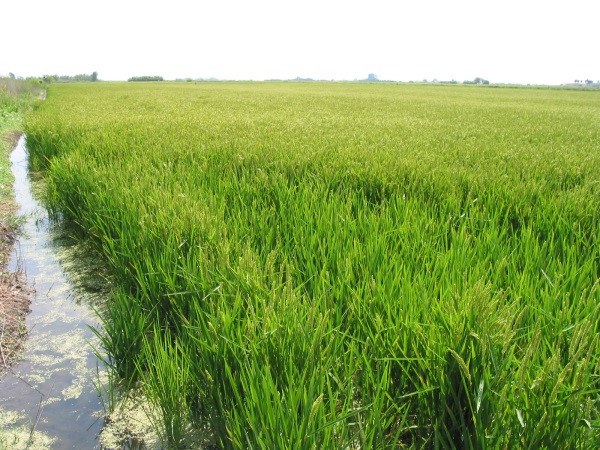
This mosquito in its adult phase has represented in the past one of the most serious elements for human health and has been the subject of in-depth study. The Anopheles atroparvus was the vector of Malaria in the Ebro Delta area. Thanks to the antimalarial campaigns, malaria was considered eradicated from our lands around the year 1945. The quinine campaigns and even the introduction of a larvòfag minnow contributed to its eradication.
The colonization of the delta and the progressive agricultural mechanization has led us to a very notable increase in this crop in the area. Associated with this increase in cultivation we have suffered an increase in mosquitoes of this species, which although today do not represent a high health risk, they have become, due to their volume, and their characteristic accumulation in inhabited nuclei, one of the most important mosquitoes in the area.
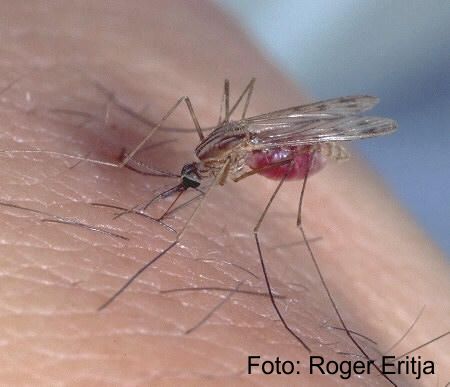
Other species of mosquitoes such as Culex modestus and Culex pipiens develop in the ecosystem that constitutes the rice field. The first shows great aggressiveness towards humans, but has a very low capacity for movement, thus it becomes a very annoying mosquito for people who have an activity in the crop in the twilight hours, but its activity goes practically unnoticed in the twilight hours. urban centers. In recent years, however, linked to changes in the varieties of rice used in cultivation, the presence of this species in the rice field has experienced a strong increase, which is why it is evident in the populations or inhabited nuclei that are more in contact with the rice field. The second species of mosquito, despite being the same species as the mosquitoes that develop and cause problems in urban centers, probably because they develop in clean waters, does not present a marked anthropophilia and birds and frogs are their main source of blood.
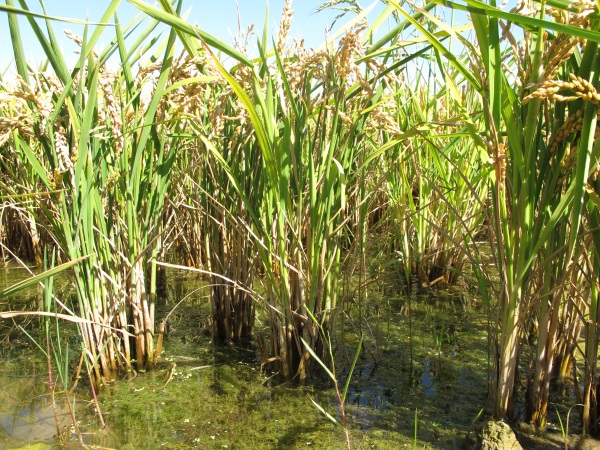
Since the month of April, when the crop is put in water, the wintering females (females already fertilized) of An. Atroparvus will seek blood intake to develop approximately 200 eggs that they will deposit in the rice field. In this way, the annual cycle begins that lasts until September with the harvest of the rice, the drop in temperatures and the drying out of the rice field.
Its flight curve represents a typical Gaus bell with the two extremes mentioned above and a maximum of activity concentrated in the first half of August.
In the field of control of this species there are very few jobs around the world, either because it is usually a problem closely linked to the third world (where solutions not desirable or allowed by us are applied), or also because the areas that produce Rice is not usually very populated, accumulating the resident population far from the larval focus, as may be the case in the French Camargue.
Other areas of the world such as the USA, with important rice paddy areas, practice intensive control of this insect, carrying out generalized treatments throughout the growing area every 10-15 days. This solution, which seems very simple and clear, is not feasible for part of our territory, since 22,000 ha treated every 15 days between the period from June to August, make a total of 132,000 ha of area to be treated, which is a physically unviable milestone. and economically.
This fact has led us to look for other control strategies, based on an in-depth study of the population dynamics of this species in our rice fields.
It is based on the fact that females come to bite humans in urban and urbanized centers, since it is in these where, unlike past times, the population is concentrated. So, the question arises as to why later this female will deposit the eggs at a long distance, in the center of the delta, when the ecological conditions of the rice fields that surround the inhabited nuclei themselves are identical to those further away? This was the initial working hypothesis that was confirmed with an extensive field work carried out during the years 92-93, where 56 rice fields of the entire deltaic plain were sampled once a week, including all the possible existing variables (far from town, near town, near poultry farm, pig farm, etc).
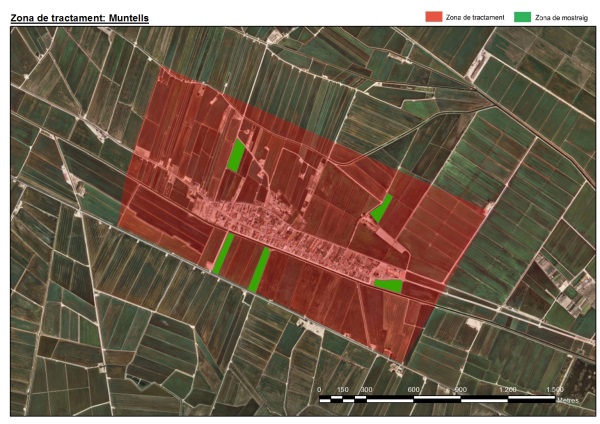
As a result, perimeter strips of the delta cores of about 600 meters wide were set, which, evaluating efficiency and economic cost criteria, have become the so-called security strips.
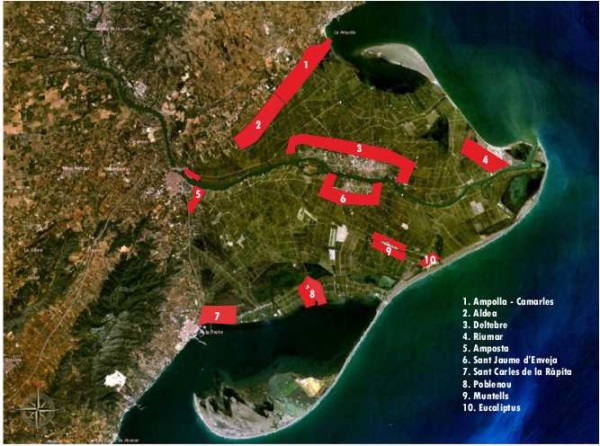
These security strips constitute the control surfaces of the rice fields, and depending on the location of each inhabited nucleus, this surface is more or less elevated. Below is a table with the relationship of the different zones:
| Zone | Area (ha) |
|---|---|
| Amposta | 60 |
| Eucaliptus | 60 |
| Poble Nou | 180 |
| Muntells | 200 |
| Sant Jaume d’Enveja | 200 |
| Sant Carles de la Ràpita | 100 |
| L’Ampolla | 170 |
| Camarles | 170 |
| Deltebre | 350 |
| Riumar | 200 |
| L’Aldea | 300 |
| Total | 1.990 |
The ideal treatment for these fringes includes carrying out 5 treatments throughout the activity cycle of these insects. But the high economic cost that this entails, has meant that over 15 years only three treatments per season have been possible, which although they are scarce, have helped us during this period of years to reduce the population of An atroparvus in the delta. The positive experience acquired throughout these years in this type of control, allows us today to face these treatments expanding them to 4, to guarantee a better control of the species in question as well as of the other problematic species of the rice field, the Cx. modestus.
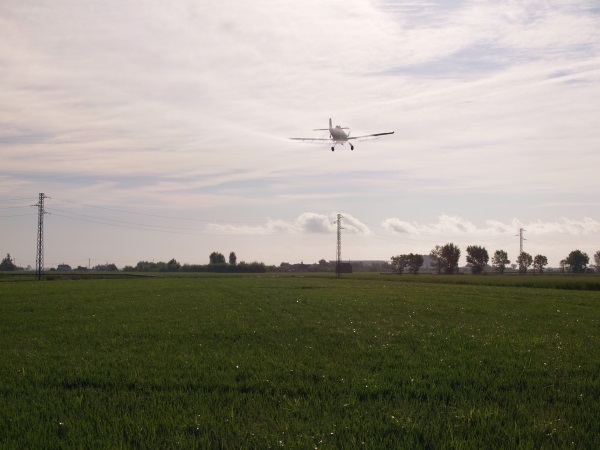
Once this clarification is made, it is true that certain areas present a greater problem when executing the treatments. This is the case of areas of rice fields interwoven with other crops or warehouses, as is the case of Amposta, or also certain areas of rice fields destined for other activities such as fish farms in the center of the control area, as is the case of Deltebre. In all these cases, it is necessary to leave border areas untreated, which are obviously larval foci of the species and reduce the effectiveness of global treatments to some extent. Certain municipal regulations are in this case necessary to prioritize the collective good over the private, and we can find proof of this in the municipalities of the Ebro Delta with a specific municipal ordinance for the fight against mosquito larvae.
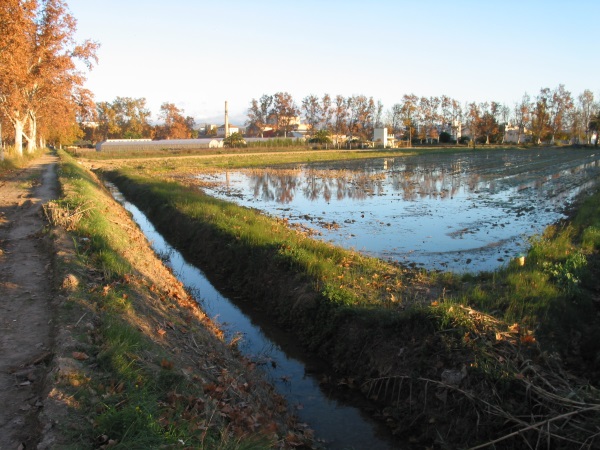
Taking into account that we have to deal with treatments on important surfaces, it is necessary to use an air treatment means, which guarantees the speed of execution that is conditioned by the population dynamics of this insect.
The planning and execution of these treatments are not without disturbances, since apart from the mobilization of all the necessary ground personnel (product controls to the track and signs of passes on the ground), they are very limited treatments in terms of time. and the weather. They can only be carried out with conditions of absolute calm, situations that in our territory force us to work at the end of the day and prolong the treatment, if the conditions are adequate until 11 am. To this condition must be added the frequent climatic disturbances that traditionally occur on these dates, which obviously complicate and lengthen their execution and ultimately influence their effectiveness. As might be expected, mosquito larvae are oblivious to these phenomena and continue to develop perfectly in the rice field.
The complexity of these treatments has led aircraft to work with the latest technology over the years. The purpose sought by this is to guarantee the success and safety of the treatments. Thus, the aircraft are equipped with a DGPS system, which will allow us to obtain all the details of the treatment by georeferencing the daily work carried out. On the other hand, it is also very important to maintain communication with the pilot while the treatment is being carried out, therefore, both the ground personnel and all the aircraft have specific radio frequency equipment to carry out these tasks.
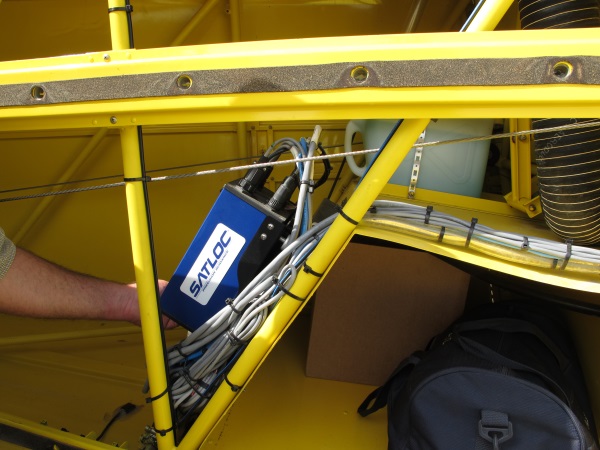
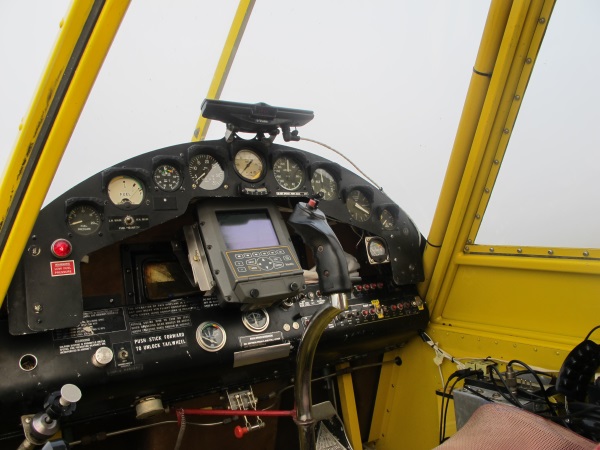
A limiting element of the treatments to the rice fields, in addition to the inclement weather, is the null range of products against the larvae of mosquitoes authorized in the rice field. At present, only one commercial product is available, based on diflubenzuro, which is an insecticide that inhibits the synthesis of chitin, without which the mosquito larvae cannot manufacture the exoskeleton in such a way that they end up dying when they molt. This situation in which we find ourselves with regard to the availability of products has two immediate consequences that should be avoided: on the one hand, the creation of resistance to the products that the continued use of the same active material to control mosquitoes can lead to. , and on the other hand, the rising cost of the product as a result of a lack of market skills. It is for these reasons, that since 2007, when the regularization of products at European level came into operation, with only one product remaining in use, we insist on the need to review this list to incorporate new molecules that allow us to carry out our work correctly.



